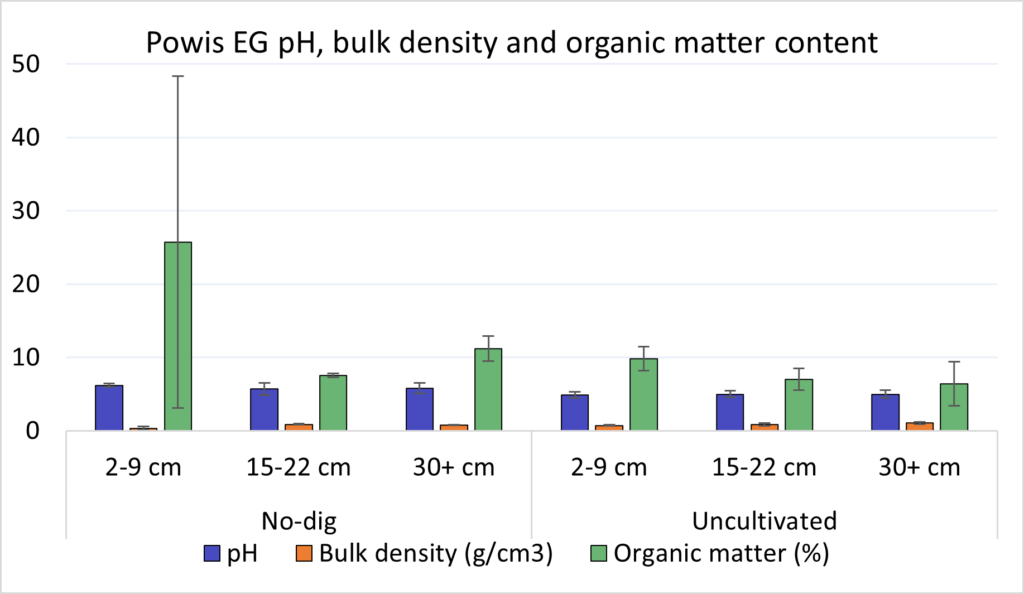Tips and information from Rachel

Background
Powis Edible Garden is a community project associated with the Powis Residents Group. It was started in 2016. Initially consisting of large numbers of a few varieties implemented by an external company, the community quickly increased the plant diversity with their own additions. The garden is now thriving and was included in a tour that was awarded a gold certificate in the 2021 Keep Scotland Beautiful Awards. The site is well known around the city as a success story for community projects. The community gardening group includes a wide range of experience levels and encourages young learners.
Produce
The no-dig site includes rhubarb, spinach and a range of berries, perennials and herbs. Rather than being a conventional plot with distinct harvesting times, the site is a mish-mash of all kinds of plants which can be foraged across the year. Whereas a row of cabbages could only be shared across a few households, berries and herbs can be spread amongst many people. A fellow Powis gardener describes the set up as “high-pickability, low nickability”.
Soil and allotment maintenance
A healthy soil to Rachel is one with “lots and lots of life” and the importance of soil health is well recognised and promoted within the community and beyond. The numerous compost bins are a signal to the rest of the community about of the importance of soil health and households are encouraged to take on their own bins. Weeding is done by hoe rather than hand so that the roots remain in the soil to aid with structure and aeration. There is also a strong focus on avoiding waste and making good use of free things. This means a wide range of materials are used for soil health.
Residents are encouraged to bring their household food waste down to the plentiful compost bins, as well as waste from chickens, hamsters and rabbits. The compost bins also receive any left-overs from the surplus food distribution table at the adjoining community centre which includes vegetables and trays of expiring plants. Special “green cones” are in place to receive cooked food which is not recommended for standard compost bins, and liquid inputs of nettle and comfrey tea are added. None of the inputs are specifically bought for the soil.
Practical measures are in place such as placing compost bins next to where additional nutrients are required. Any seepage from the bins is then taken up by the neighbouring plants. Each bin is emptied when the compost is deemed to be ready, which is roughly after two years. There are no particular rules for garden maintenance, so each individual gardener has freedom to experiment with their ideas. Rachel thinks of this as a Zen approach to gardening.
Tips for new growers in North East Scotland
Rachel’s tips for new growers have been learned from her extensive experience at other growing sites too. Like Adrian, she has refined her growing to focus on what she likes and what grows well. Not only in terms of crop type, but in the different varieties of each. The problem is, remembering which varieties you like for the following year! Rachel recommends multiple labels as some of them always go missing. Strips of tin cans can be indented by pens and avoid problems if the ink is washed off.
The belief here is that free is good. Fruit bushes can be expensive to buy, but cuttings from existing ones are free and easy to grow. If several cuttings are taken from stems in spring or autumn, more than half usually grow and become established. Perennials are good in general because they prevent the soil being bare and are low maintenance. Rachel believes that the key to long-term success of a growing space is for it to be low maintenance. It’s common for various communities to get motivation to start growing, but much less common for the plots to be maintained.
For growers in North East Scotland Rachel recommends a book by a fellow community member, and the TV program Beechgrove, both are which are specialised to growing in the region. For inspiration about the importance of soil, she recommends this 2022 article by George Monbiot.
Soil properties of Powis Edible Garden

(Error bars show standard deviation from the mean)


The measure mg/L (milligrams per litre) gives the same figures when converted to g/m3 (grams per meter cubed). Note that soil properties may be highly variable within a short distance and figures given are not representative of the whole area.
Return to an overview of all the sites and people.